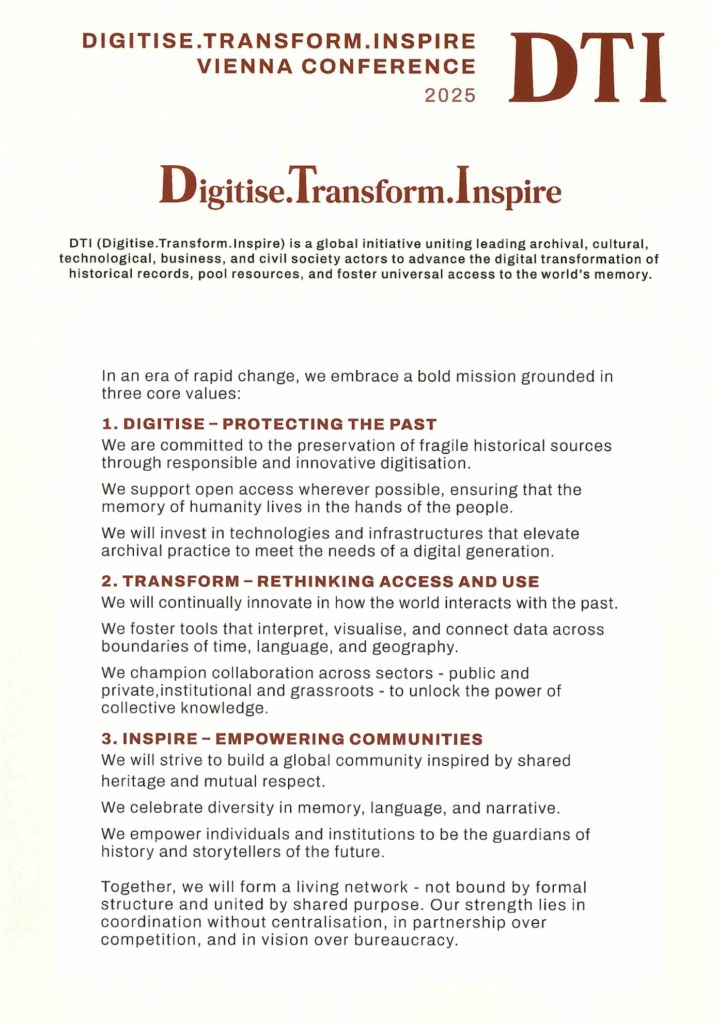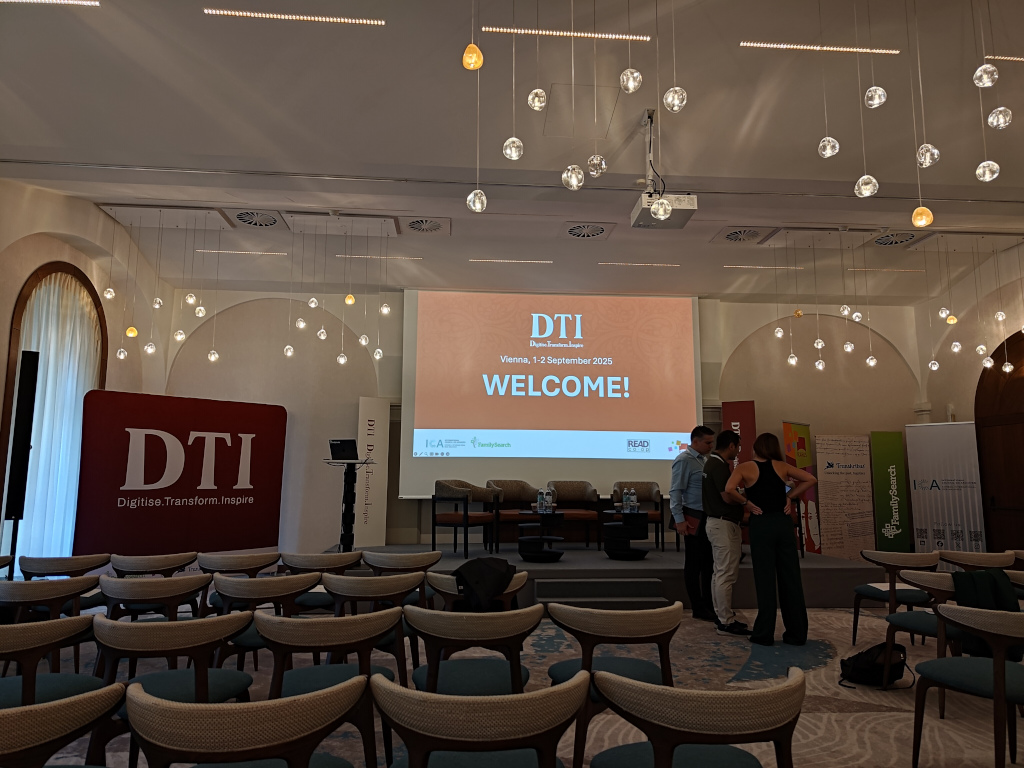On the 1st and 2nd of September 2025 ICA, ICARUS, FamilySearch and READ COOP hosted the Digitise.Transform.Inspire Conference in Vienna, Austria. Approximately 200 people from Europe and all around the world met there to discuss how cultural heritage can become more accessible. I was there too and here I quickly recap what it was all about.
The conference started from the premise that today we have technology and tools available so that we have the ability like never in the past to make our cultural heritage available and accessible for the public. With that we all might profit from this in unforeseeable ways. „We all“ might mean researchers, scholars, holding or conservation institutions, the commercial sector and the general public. This poses challenges. Therefore, working together and creating means of collaboration, knowledge and technology sharing will be necessary.
The organizers created a manifesto which I reproduce below.

In different talks and panels attendees shared their initiatives and flagship projects. They discussed about certain aspects of what are the challenges in technology, funding, engagement and other parts. Insights came from Europeana, FamilySearch, Transkribus, Time Machine Europe and Topotheque among others.
Institutions from the LAM (libraries archives museums) sector are in vastly different stages with respect to the Digitise.Transform.Inspire (DTI) approach. A participant remarked that holding institutions are not the owners of the content they hold but the protectors and custodians. Still, some want to exert ownership and thus hindering progress. The participants seemed to agree to that, but if they wouldn’t they probably wouldn’t be participating in the conference.
Another topic was funding. It often is too complex and bureaucratic for small institutions to acquire grants for their work. A participant from MyHeritage remarked that participants should not underestimate what the commercial sector (i.e. them and Ancestry) can do for them. This might be true but raises questions about the democratic representation of cultural heritage. The commercial players are only interested in data that fits their target audience – which is genealogy. This topic has been a major driver of digitization and entry point for many into the LAM sector. Also often with them then expanding their interest beyond that topic.
Overall, the conference content was quite visionary and lacked concrete next steps. I’m not criticizing that because this was exactly what the conference topic was about. It was about establishing a shared vision and exploring the aspects of it. It will be really interesting to see what the next steps will be and how this turns out to be brought into being.
For me it was quite interesting, because I myself have experienced the topics brought up first hand. I was interested in digitization and learned the difficulties. Then I saw that there are vastly different stages that actors are in and that building common understanding and sharing knowledge is very important. My entry point to this was genealogy as well and I then expanded my interest beyond that. I was also able to talk to several interesting people like community managers of FamilySearch, the European area manager of Ancestry, the head of the archive of the diocese of Gurk-Klagenfurt, the expert on medieval charters of the Haus-, Hof- and Staatsarchiv Wien and others.

